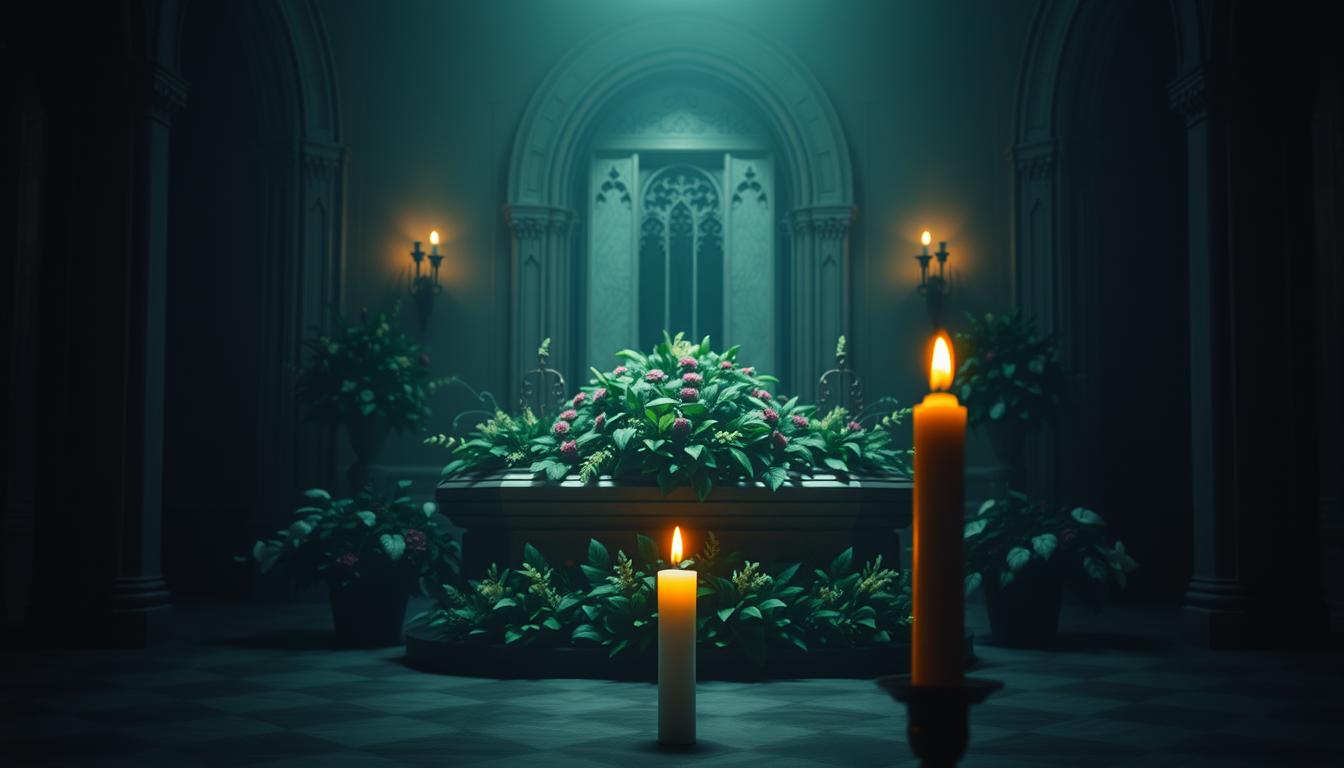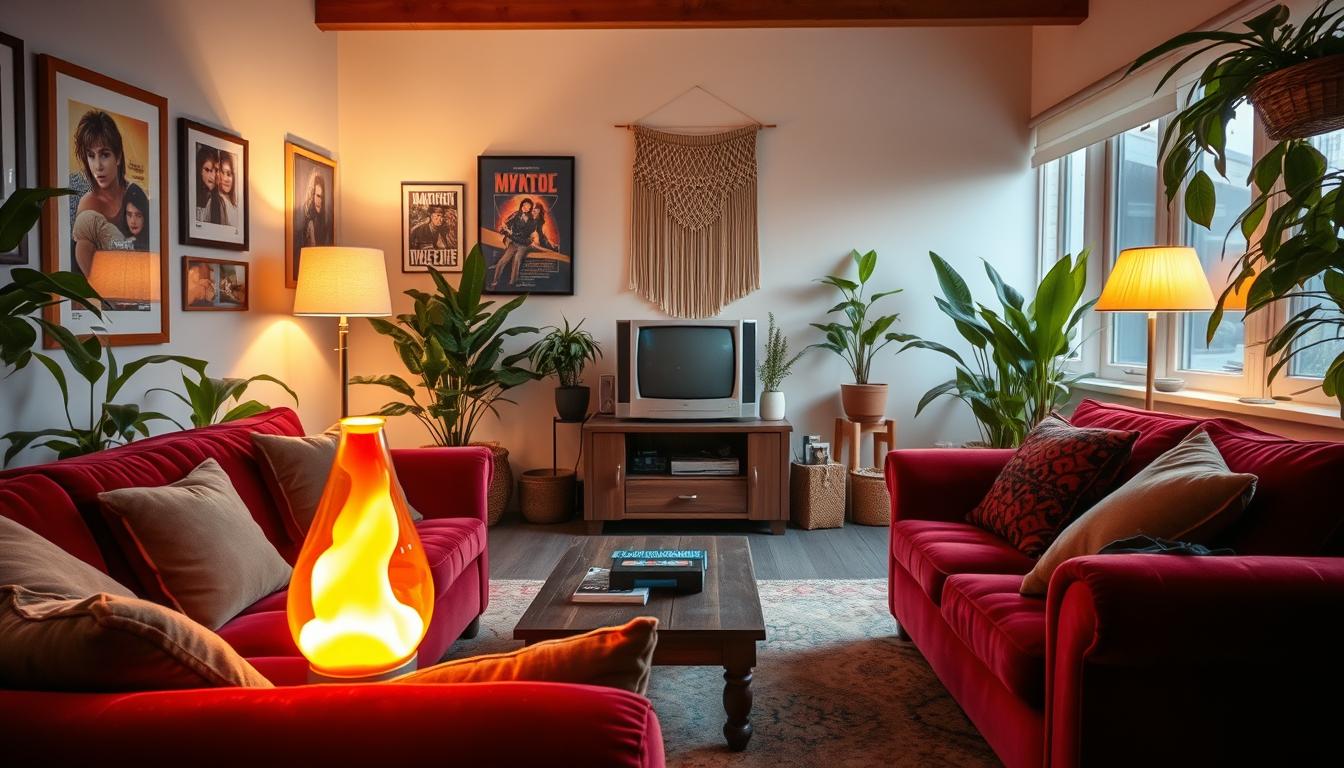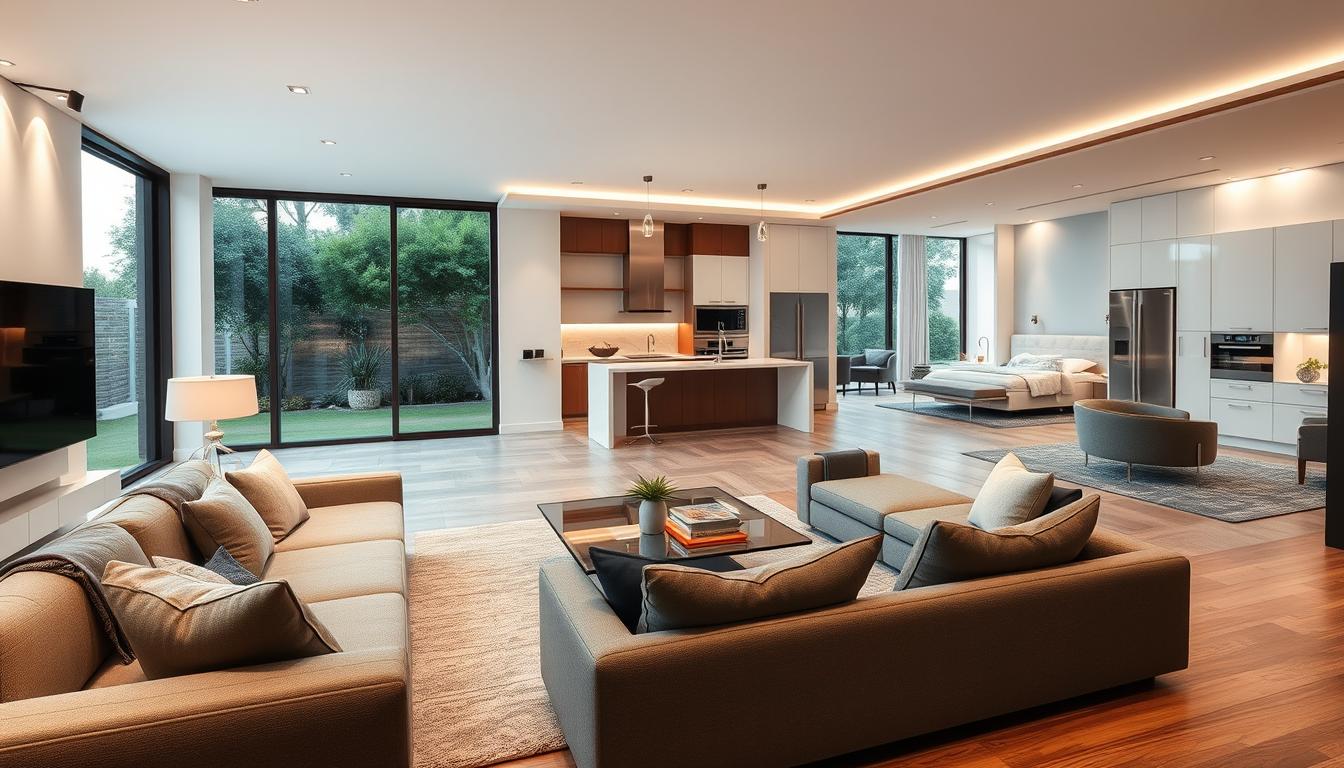Did you know that the design of a space can greatly affect how we grieve? Creating a space that feels comforting and welcoming is key for those in mourning. We know how important a well-designed space is in offering solace and support during tough times.
At the core of a thoughtful funeral space design is understanding the needs of those who will use it. We’ll look at the essential elements for a supportive space. This includes careful planning, the use of technology, and eco-friendly practices.
Key Takeaways
- Create a comforting atmosphere through thoughtful space planning
- Incorporate technology to enhance the experience
- Use sustainable practices in your design
- Consider the needs of the families and individuals using the space
- Balance functionality with emotional support
Understanding the Importance of Funeral Home Interior Design
A well-designed funeral home interior can greatly help during the grieving process. It creates a supportive environment for families. The design is not just about looks; it’s about offering comfort and solace during tough times.
The interior design of a funeral home is key in setting a mood for reflection, mourning, and celebration. It’s important to find a balance. The space should be somber yet welcoming, like a home.
Reflecting Care and Compassion
The design should reflect care and compassion, making the grieving process easier for families. We use elements that promote peace and tranquility. For example, soothing colors and comfy furniture can greatly impact the space’s feel.
We design funeral home interiors with families’ emotional needs in mind. We create areas for private reflection and spaces for larger gatherings.
Setting the Right Atmosphere
Creating the right atmosphere in a funeral home is crucial. It should be dignified and respectful yet welcoming and comforting. We use careful lighting, appropriate decor, and thoughtful space planning to achieve this.
Natural light can make a room feel more open and less somber. Adding elements of nature, like plants or a water feature, can also bring serenity.
By focusing on these aspects, we create funeral home interiors that meet families’ needs. They provide a comforting and supportive environment during difficult times.
Key Elements of Funeral Home Design
Creating a funeral home that looks good and works well needs careful thought. Funeral home design ideas mix beauty, comfort, and usefulness. This makes the space special for those who visit.
It’s key to think about what families need when designing a funeral home. Spaces should be both lovely and practical, offering comfort.
Space Planning Essentials
Planning the space is vital in funeral home design. It’s about making areas that can handle different events. A good funeral home has spots for viewing, chapels, and receptions.
- Assessing the needs of the community and the families served
- Designing spaces that are adaptable for different ceremonies
- Ensuring easy navigation throughout the facility
| Space | Purpose | Design Considerations |
|---|---|---|
| Viewing Rooms | For family and friends to pay their respects | Comfortable seating, serene atmosphere, appropriate lighting |
| Chapels | For holding memorial services | Flexible seating, good acoustics, religious or cultural sensitivity |
| Reception Areas | For gatherings after services | Ample space for refreshments, comfortable seating, pleasant ambiance |
Incorporating Natural Light
Natural light makes a funeral home feel welcoming. It’s best to use windows or skylights to let in light.
Light not only makes the place look better. It also helps people feel more at peace when they’re grieving.
Choosing Appropriate Colors
Colors in a funeral home are very important. They can make people feel different emotions. Blues and greens can help people relax and heal.
Choosing colors wisely is crucial. They should help grieving families feel calm. Neutral colors can bring peace, while soft colors show respect.
By focusing on space, light, and color, funeral homes can offer comfort and support. This is vital during hard times.
Selecting Functional Furniture for Funeral Homes
Choosing furniture for a funeral home is more than just picking something pretty. It’s about finding pieces that are both functional and respectful. The goal is to create a space that supports those who are grieving.
Comfort vs. Aesthetics
Furniture in a funeral home has to do more than just look good. It needs to be comfortable for those who are mourning. At the same time, it should reflect the dignity of the occasion.
Funeral homes can find furniture that is both stylish and cozy. For example, they can choose plush sofas and armchairs. These pieces should be comfortable but also fit well with the decor.
Space-Saving Solutions
Space is often limited in funeral homes. So, picking furniture that is both useful and unobtrusive is key. Space-saving solutions help make the space feel more open and flexible.
Using furniture that serves more than one purpose is a good idea. For example, storage ottomans or nesting tables can be rearranged or stored when needed. Furniture with simple designs and less bulk also helps keep the space feeling airy.
Creating Private Spaces for Families
Private areas in funeral parlor design are key for families grieving. They offer a quiet place for families to mourn, reflect, and prepare for ceremonies. This space is designed to be both comfortable and secluded.
It’s important to make a clear difference between family rooms and public areas. Family rooms are for the family’s private use. They are where families can receive close friends, share memories, and find comfort. Public areas, on the other hand, are for more people. They are where mourners can offer condolences and grieve together.
Family Rooms vs. Public Areas
Family rooms focus on comfort and privacy. They should have amenities like comfortable seating, refreshments, and restrooms. The decor should be calming, helping to reduce stress.
Public areas, by contrast, need to handle a larger, more varied crowd. They should be big, well-ventilated, and easy to get to. The design should help people move around and provide enough seats and viewing spots for services.
| Design Element | Family Rooms | Public Areas |
|---|---|---|
| Seating | Comfortable, intimate seating arrangements | Spacious seating for larger groups |
| Decor | Soothing colors and calming decor | More formal decor, reflecting the funeral home’s character |
| Accessibility | Private access, potentially with direct access to viewing areas | Easily accessible, with clear pathways |
Privacy Features
Adding privacy features to funeral parlor design is crucial. This includes soundproofing family rooms and using dividers or curtains. It’s also important to make sure private areas are not seen by public spaces.
Technology can also help with privacy. For example, audio-visual equipment can stream services to private areas. This way, families can join remotely if they need to.
By focusing on private spaces in funeral homes, we can help families through tough times. We provide them with the privacy and comfort they need.
The Role of Technology in Funeral Home Design
Technology is now a key part of funeral home design, not just an extra feature. It makes the experience more meaningful and personal. This shows how important technology is in creating lasting tributes.
Technology is changing how we honor our loved ones. It improves the atmosphere and lets families connect with memories in new ways. Technology is leading the way in funeral home design.
Integrating Audio-Visual Equipment
Audio-visual equipment is a big part of this change. It includes digital displays for photos and videos, sound systems for music, and live streaming. This lets everyone join in, even if they can’t be there in person.
These tools make services better and let families share memories in a fun way. It’s more interactive and engaging.
Online Tribute Features
Online tribute features are also key. They include digital guest books and online memorials. Here, people can leave messages, share photos, and view tributes.
These features help keep the memory of loved ones alive. They let more people celebrate and remember, even after the funeral.
By using technology, funeral homes can offer a more personal and inclusive experience. They meet the needs of different families and create lasting tributes.
Designing for Accessibility in Funeral Homes
Funeral homes need to be welcoming to everyone, no matter their age or ability. This means making sure they are easy to get around and are a place where everyone feels at home.
Compliance with ADA Standards
The Americans with Disabilities Act (ADA) has rules for making places like funeral homes accessible. It’s very important to follow these rules when renovating a funeral home.
Some key things to do for ADA compliance include:
- Installing ramps and elevators for wheelchair access
- Making sure doorways and hallways are wide enough for wheelchairs
- Providing accessible restrooms with grab bars and lowered sinks
- Creating accessible parking spaces near the entrance
| ADA Compliance Feature | Description | Benefit |
|---|---|---|
| Ramps and Elevators | Facilitates wheelchair access between levels | Enhances mobility for people with disabilities |
| Wide Doorways and Hallways | Allows easy passage for wheelchairs | Improves navigation throughout the facility |
| Accessible Restrooms | Includes grab bars and lowered sinks | Provides dignity and safety for individuals with disabilities |
Ensuring Ease of Navigation
It’s not just about physical access. Funeral homes should also be easy to get around. This can be done with clear signs, a simple layout, and good lighting.
Some ways to make it easier to navigate include:
- Using clear and consistent signage throughout the facility
- Designing a logical and straightforward layout
- Employing lighting that is both adequate and unobtrusive
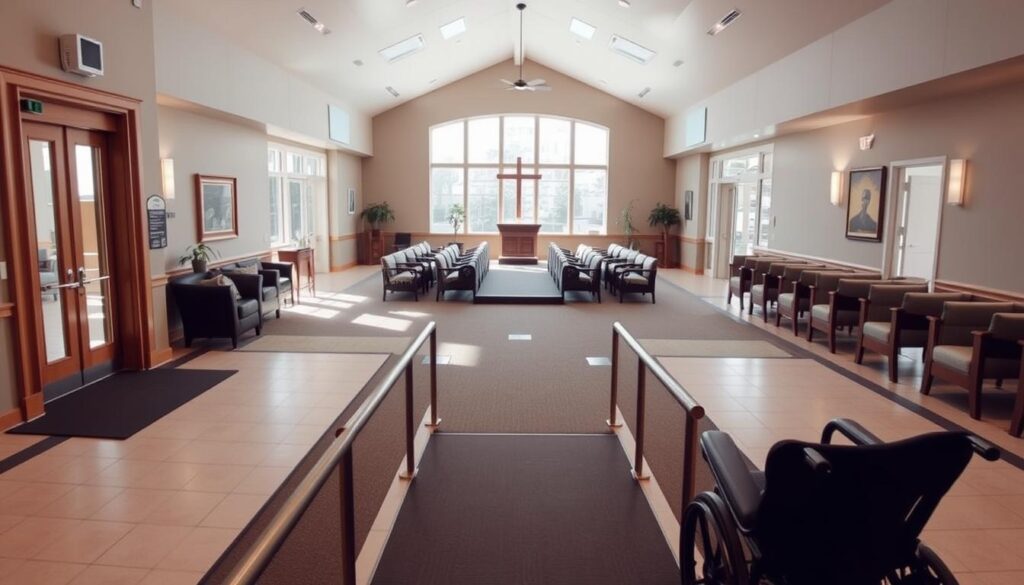
By focusing on ADA compliance and making it easy to get around, funeral homes can be more welcoming. This helps families and friends who are grieving feel more at ease.
Incorporating Art and Decor in Funeral Homes
Creating a peaceful space in funeral homes is key. This is done through meaningful art and decor. Artwork and natural elements bring comfort to families in their grief.
Choosing Meaningful Artwork
Choosing artwork for funeral homes is important. It should reflect hope, renewal, and remembrance. Pieces that connect with the family’s or deceased’s story or preferences are very meaningful.
- Select artwork that is calming and serene.
- Consider the personal tastes and cultural background of the family.
- Local artists or community-created pieces can add a personal touch.
The Use of Plants and Nature Elements
Adding nature to funeral home decor is beneficial. Plants, flowers, and materials like wood and stone can make the space peaceful. They create a calming atmosphere.
- Use plants known for their symbolic meanings, such as peace lilies or white roses.
- Incorporate natural materials into furniture and decorative elements.
- Consider seasonal flowers or plants to reflect the time of year or the deceased’s favorite blooms.
By choosing the right artwork and natural elements, funeral homes can offer a supportive space. This space helps families to grieve and celebrate their loved ones’ lives.
Balancing Tradition and Modern Trends
In funeral home design, finding a balance between old and new is key. These spaces must meet the needs of many, from those who love tradition to those who want something modern.
Knowing what clients want is essential. It’s about making a space that honors the past but also looks to the future. Funeral home design ideas can mix classic furniture and religious symbols with digital displays and green materials.
Understanding Client Preferences
People have different tastes when it comes to funeral homes. Some like traditional settings for their comfort and familiarity. Others want something modern to show off the personality of the deceased.
To meet these needs, funeral homes can use a mix of old and new. For example, they might have traditional pews and modern digital memorials.
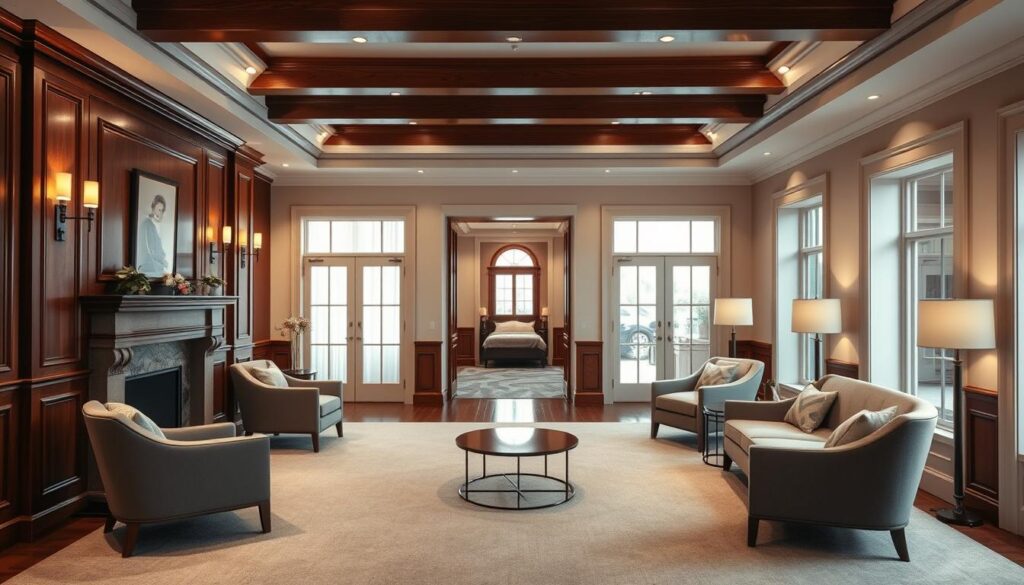
Blending Old and New Design Styles
Mixing old and new design styles needs careful thought. It’s about finding a balance that makes the space meaningful and cohesive.
The table below shows how to mix traditional and modern elements in funeral homes:
| Design Element | Traditional | Modern |
|---|---|---|
| Furniture | Classic pews, ornate coffins | Sleek benches, minimalist caskets |
| Lighting | Candles, chandeliers | LED lighting, smart lamps |
| Decor | Religious iconography, floral arrangements | Digital displays, personalized memorabilia |
By carefully combining these elements, funeral homes can create a space that respects tradition but also looks to the future.
Importance of Color Psychology in Funeral Spaces
In funeral spaces, colors are more than looks; they’re healing. They deeply affect our feelings, crucial in funeral homes to help with grief.
Funeral home design is not just about looks. It’s about making a space that comforts those who are mourning. Color psychology is key, as colors can stir different emotions.
Soothing Colors for Healing
Soothing colors are vital in funeral spaces. They help with healing and comfort. Light blue and sky blue are calming. Green brings hope and renewal, comforting during grief.
Neutral colors like beige, cream, and soft gray are also used. They create a peaceful atmosphere. This allows families and friends to remember their loved ones in a calm setting.
Inviting Color Schemes
Creating an inviting color scheme is also important. Warm colors like terracotta, golden brown, or soft peach make spaces feel welcoming. These colors add warmth and comfort, making the space feel like home.
The choice of color depends on culture and personal taste. Understanding families’ needs and preferences is crucial. This way, funeral homes can be both comforting and meaningful.
By choosing colors that heal and creating inviting schemes, funeral homes support those grieving. This thoughtful use of color psychology is a big part of funeral home interior design and funeral home aesthetics. It makes the mourning experience better.
Sustainable Design Practices for Funeral Homes
Adding eco-friendly elements to funeral home design helps the environment and makes the space better. We aim to create places that are both comforting and green. This means thinking carefully about our design choices.
“Sustainability is no longer a trend but a necessity in modern design,” experts say. This is very true for funeral homes. The atmosphere in these places is key in helping people grieve.
Environmentally Friendly Materials
Choosing the right materials is key for a green funeral home. We suggest using reclaimed wood, bamboo, and paints with low VOCs. For example, funeral home furniture made from reclaimed wood is warm and eco-friendly.
Materials should also last long and need little upkeep. This means they won’t need to be replaced often. This saves the environment from extra waste and costs.
Energy-Efficient Solutions
Being energy-smart is vital in funeral home design. Using LED lights, which use less energy than old lights, is a smart move. Also, using natural light by placing windows right can cut down on the need for artificial light.
- LED lighting for reduced energy consumption
- Smart thermostats for efficient heating and cooling
- Solar panels for renewable energy
By adding these energy-saving features, funeral homes can save money and help the planet.
When we do funeral home renovation projects, we must focus on being green. This way, our spaces will be both comforting and good for the environment.
Listening to Feedback for Continuous Improvement
When we design funeral home interiors, we must always look for ways to get better. We do this by listening to what families and individuals have to say. Their feedback helps us make spaces that are not just pretty but also meaningful and useful.
Client Insights
Getting input from clients is key to understanding what they need and want. Their stories and experiences guide us in making improvements. This way, we can make the funeral home a more comforting place for everyone.
Refining the Design
We make changes based on what we learn from feedback. This ensures the funeral home remains a place of comfort and solace. By always listening and adapting, we create a more compassionate and supportive space for families and individuals.

